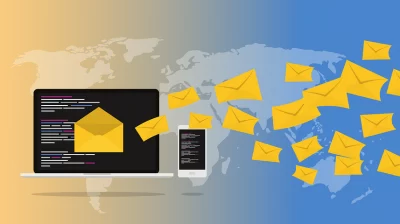Data & AI
Enhance Your One‑to‑One Personalization Efforts with Minimal Effort
December 10, 2021

From ordering groceries on mobile via an app to picking up pre-wrapped holiday items curbside, the last few years have changed consumer behavior forever.
But the move to a more omnichannel experience doesn’t mean that customers no longer want relationships with brands. In fact, shoppers now want more one-to-one personalization efforts than ever before according to our 2021 Retail Personalization Index Consumer Survey.
However, one-to-one personalization efforts aren’t built overnight. So, here are a few ways that artificial intelligence and machine learning can boost personalization efforts for brands looking to build one-to-one connections — with little (or no) extra effort required.
Improve Your Customer Experience by Asking All the Right Questions
One of the most important things a brand can do to gather the first-party data that fuels successful one-to-one personalization efforts is to simply ask. Many consumers are happy to fill out a short survey the first time they visit your website, for example.
However, when consumers give up their increasingly valuable first-party data, they fully expect brands to use it to improve the customer experience.
That’s why, when clothing retailer Hot Topic wants to learn about its new customers, the brand uses its onboarding process as a relationship-building opportunity to make an unforgettable first impression that delivers the data its marketing strategy needs.
Since asking email subscribers for their Harry Potter house preferences and using one-to-one personalization efforts to serve unique reader experiences, the brand has boosted email open rates by 260%. By using machine learning and automation to effortlessly segment audiences, Hot Topic can effortlessly segment audiences to generate future engagement by using their answers for personalized messaging.
Deliver Content That Makes Your One-to-One Personalization Efforts Pop
Your brand can build loyalty by showing customers you’re simply paying attention. And with AI-powered recommendation algorithms at your disposal, you’re ready to deliver truly impressive content that inspires audiences to act.
A recent study by McKinsey found that 75% of consumers expect brands to make it easy for them to navigate their experiences — both online and in-store. And a big part of the guidance they expect involves one-to-one personalization efforts. In fact, 67% responded that relevant product and service recommendations were critical during their shopping experiences.
In order to seamlessly drive loyalty through one-to-one personalization efforts, grocery retailers paired up with Marigold Engage by Sailthru to combine their first-party data with AI-driven content recommendation algorithms in order to ensure that messaging is always automatically tailored to customers’ specific interests.
“With Sailthru’s Personalization Engine, we target users who have an interest in a particular product or who have purchased from a similar category,” Thrive Market’s Senior Director of CRM & Lifecycle Marketing Lindsay McGovern recently explained. “We use interest-based tags to target who gets that offer and we’re really happy with our new structure. We think our members are, too; the engagement metrics are higher than ever.”
Reach the Right Person (With the Right Message) at the Perfect Time — Regardless of Channel
When it comes to making sure your one-to-one personalization efforts get your marketing messages across, timing is everything. And thanks to the power of machine learning, brands can make sure their message never gets lost in the shuffle again.
Tools like Sailthru’s Personalized Send Time automatically analyze the click, open, and engagement histories of each subscriber, then use those reports to dynamically deploy email messages at the optimal moment within designated time windows. Small, data-driven changes such as personalizing email send times can actually make all the difference as customers continue to adopt new shopping behaviors.
That’s why cosmetics retailer Sephora uses AI and machine learning technology to connect the data dots. Whether customer data is collected in-store or online, Sephora makes sure its customers can always easily find the products they love.
On Sephora’s website, for example, the one-to-one personalization efforts begin the minute a new customer visits. Sephora’s website immediately reports the new visitor’s geolocation data to point out the nearest store, providing additional information around which in-store services are currently available. And in-store, Sephora even uses data from individual shopper makeovers to power future product recommendations, creating a personalization loop from the first-party data its customers provide, no matter the channel.
If your goal is more effective one-to-one personalization efforts with as little extra work as possible, we’re just getting warmed up! Download our Top-Performing Holiday Emails Guide to inspire some fresh ideas — and immediate improvements.
The State of Brand Loyalty in the U.S. in 2023
Related



